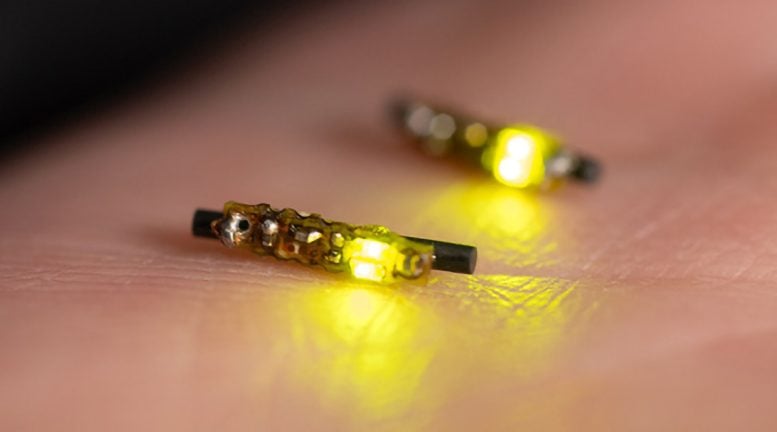
Notre Dame scientists have created an implantable wireless LED device that uses light and a special dye to kill cancer cells and activate the immune system, offering a new approach to treat internal cancers effectively.
Specific forms of light, when paired with a light-activated drug, can serve as an effective and non-invasive treatment for cancers on or near the skin. However, cancers located deep within the body—shielded by tissues, blood, and bone—remain inaccessible to the therapeutic benefits of light.
To bring light’s benefits to these harder-to-access cancers, engineers and scientists at the University of Notre Dame have devised a wireless LED device that can be implanted. This device, when combined with a light-sensitive dye, not only destroys cancer cells, but also mobilizes the immune system’s cancer-targeting response. The research was published in Photodiagnosis and Photodynamic Therapy.
The Role of Light Color in Treatment
“Certain colors of light penetrate tissue deeper than other ones,” said Thomas O’Sullivan, associate professor of electrical engineering and co-author on the paper. “It turns out that the kind of light — in this case green — that doesn’t penetrate as deeply has the capability of producing a more robust response against the cancer cells.”
Before the light can be effective in destroying cancer cells, a dye with light-absorbing molecules must be administered to the cells. The device turns on, the dye transfers the light into energy and that energy makes the cells’ own oxygen toxic — in effect, turning the cancer cells against themselves.
While other treatments also weaponize the cells’ own oxygen, this device causes a particularly serendipitous form of cell death.
“Working together, biochemistry graduate student Hailey Sanders and electrical engineering graduate student SungHoon Rho perceptively noted that the treated cells were swelling, which is the hallmark of a kind of cell death, pyroptosis, that’s particularly good at triggering the immune response,” said Bradley Smith, the Emil T. Hofman Professor of Science and co-author on the paper.
“Our goal is to induce just a little bit of pyroptotic cell death, which will then trigger the immune system to start attacking the cancer.”
Future Research and Applications
In future studies, the device will be used in mice to see whether the cancer-killing response initiated in one tumor will prompt the immune system to identify and attack another cancerous tumor on its own.
O’Sullivan noted that the device, which is the size of a grain of rice, can be injected directly into a cancerous tumor and activated remotely by an external antenna. The goal is to use the device not only to deliver treatment but also to monitor the tumor’s response, adjusting signal strength and timing as needed.
Reference: “Miniature wireless LED-device for photodynamic-induced cell pyroptosis” by Sunghoon Rho, Hailey S. Sanders, Bradley D. Smith and Thomas D. O’Sullivan, 9 May 2024, Photodiagnosis and Photodynamic Therapy.
DOI: 10.1016/j.pdpdt.2024.104209
This research was one of four projects funded by the first Seed Transformative Interdisciplinary Research (STIR) grants. Initiated in 2023 by the Notre Dame College of Science and College of Engineering, these grants are designed to jump-start science and engineering research projects in human health, the environment, and information technologies.